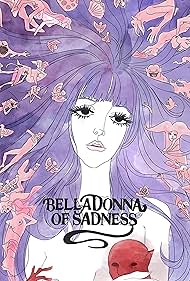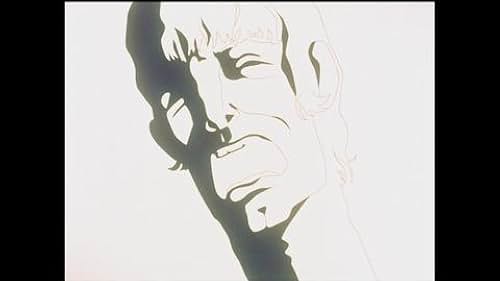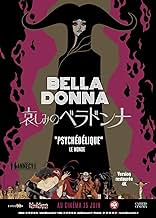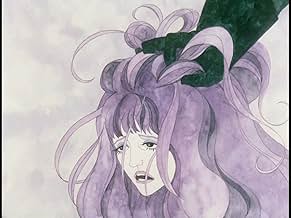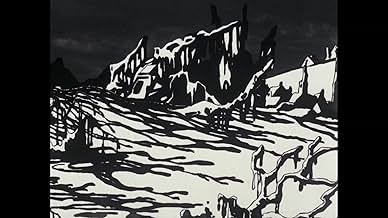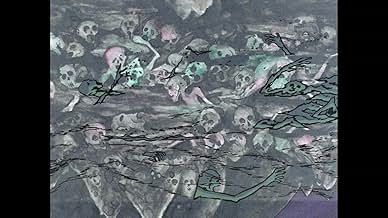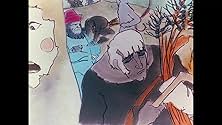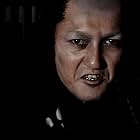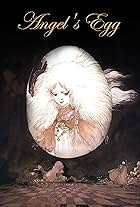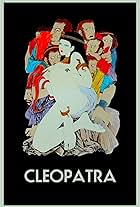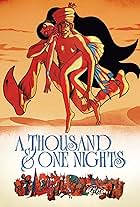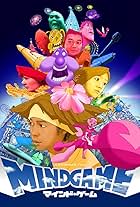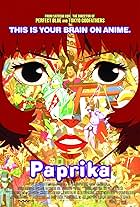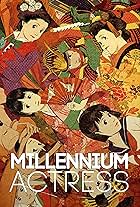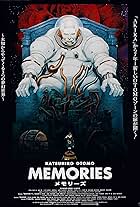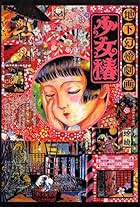After being raped by an evil feudal lord and subsequently getting banished from her village, a peasant girl makes a pact with the Devil to gain magical powers and take her revenge.After being raped by an evil feudal lord and subsequently getting banished from her village, a peasant girl makes a pact with the Devil to gain magical powers and take her revenge.After being raped by an evil feudal lord and subsequently getting banished from her village, a peasant girl makes a pact with the Devil to gain magical powers and take her revenge.
- Awards
- 2 nominations
- Jeanne
- (voice)
- …
- Narrator
- (voice)
- The Lord
- (voice)
- The Priest
- (voice)
- Jean
- (voice)
- (as Katsutaka Ito)
- Walla
- (voice)
- Walla
- (voice)
- Walla
- (voice)
- Walla
- (voice)
- Walla
- (voice)
- Walla
- (voice)
- Walla
- (voice)
- Walla
- (voice)
- Walla
- (voice)
- Walla
- (voice)
- Walla
- (voice)
- Devil
- (voice)
- Director
- Writers
- All cast & crew
- Production, box office & more at IMDbPro
Storyline
Did you know
- TriviaThe last film produced by Mushi Production. They went bankrupt shortly after its release.
- GoofsThe end of the film references the French Revolution of 1789, but then an image is shown of Eugène Delacroix's famous painting "Liberty Leading the People." That painting - "Liberty Leading the People" - depicts the July Revolution of 1830, not the French Revolution of 1789.
- Quotes
Jeanne: What ails you little one? Do you want me?
Page: Jeanne, Don't you recognize me? I'm the Lady's page. She hates you, so I hated you too. I'm the one who slashed your green cloak.
Jeanne: Your point, little page?
Page: I did it because... I love her.
Jeanne: Are you here to kill me?
Page: I need your help, Jeanne. Hear my plea. I want to make love to her. But... I'm only a lowly page. She'd never consider me.
Jeanne: Who cares about status?
Page: God granted us our status. Ignoring that is against God! The Work of the Devil! Hower... I'm willing to sell myself to the devil for my love.
Jeanne: Enough.
[Jeanne hug the Page]
Page: [Page gets scared] Filthy witch! How dare you!
Jeanne: [Jeanne lauging] Very well, I'll help you.
- Crazy creditsThere are no ending credits or a 'THE END' title; all the credits are at the beginning. The opening theme is reprized over a blank screen after the final scene. The 2015 restoration adds a copyright byline and credits for the restoration.
- Alternate versionsAccording to the liner notes booklet contained with the Japanese DVD of the film, there are six known versions of the film.
- The first was a draft version that was hastily created to meet a deadline that the film had to be shown to the distributor, Nippon Herald, for their perusal by August 1972. This version, which contains temporary placeholder shots made by a team separate from the main crew, has never been shown to the public.
- The second version was completed by the end of 1972, and premiered at the 1973 Berlin International Film Festival. Aside from the placeholder shots of the first version being replaced with material created by the main team, the scene in which Jeanne makes her pact with the Devil was immediately followed by a 5-minute live-action montage shot by Daido Moriyama depicting sexual acts performed in parks and red light establishments. This version also ends with the Devil laughing in the crowd after Jeanne's execution. Because this ending was poorly-received at the Festival, Eiichi Yamamoto decided to alter it in later versions.
- The third version was used early on during the film's Japanese theatrical release. It omitted Moriyama's live-action montage, but still retained the Devil's laughter at Jeanne's death.
- The fourth version, created partway through the Japanese theatrical run, removed the Devil's laughter, and featured an instrumental version of the film's theme song over the ending. An edited presentation of this version was used for some TV broadcasts.
- The fifth version was edited for an attempted 1979 re-release. In an effort to appeal to female college students, Yamamoto cut 8 minutes' worth of material from the original camera negative, removing most of the film's scenes of sexual violence. This version also made alterations to the film's ending: a newly-animated shot of female bystanders at Jeanne's execution, whose faces morph into Jeanne's visage, was added, as well as a final montage of title cards describing the role of women in the 1789 French Revolution, with the film's final shot being of Eugène Delacroix's painting "Liberty Leading the People". Some revisions were also made to the film's opening credits roll. This version was released on VHS by Pony Canyon in the early 1980s.
- The sixth version was created in 1986 for the film's VHS re-release and first release on LaserDisc. Although otherwise based on the 1979 re-release, it reinstates all of the sexual content omitted from that version. This is the version that has remained in circulation since, and was restored in 4K for its 2016 re-release.
- ConnectionsFollows A Thousand & One Nights (1969)
Its regarded as a very early example of Japanese anime but it's like no other anime I have ever seen. While it definitely does have some material that would go on to be associated with the manga branch of Japanese anime, it is executed in a somewhat experimental manner. This is quite honestly more of an art film than an actual story. Many folks seem to have taken all manner of things away from this one in terms of its content, such as a feminist message and such. And while I agree that this is there, the sheer beauty of the artistry is so overwhelming that the contents of the story were completely overshadowed by the visceral sensory experience of watching this one. Despite its Japanese origins this one is set in the Middle Ages in Europe and it begins with a wedding of a young couple. The groom cannot pay the marriage tax so the baron exercises his 'rights' and rapes the bride. This trauma deeply affects the young couple and the woman turns to witchcraft.
Some may be taken aback by certain aspects of this one. Firstly, despite being an animated work, much of the story is told by still paintings and drawings. There are many elaborately detailed tableaux which the camera pans across and in so doing expands upon the narrative. There are many still pieces of art of varying styles, such as landscape watercolours, comic-book style figures and surrealism. These visual ideas are interwoven with early 70's styles such as psychedelia and transgressive underground comics. There are animated sections too, which make even more impact because they only appear every so often. There seems to be a general split where the narrative is depicted using stills and the inner working of the protagonists mind are animated. Consequently, this leads to the extended animated sequences being more dreamlike and surreal in nature. Accentuating all of this is an excellent soundtrack which works fantastically well with the imagery on screen. It's quite an eclectic score which features what could best be described as Japanese folk-pop and some out-and-out prog-rock.
As I said before, this isn't a film for everybody. Aside from its experimental approach, some may find the sexual content difficult. There are many examples of sexual imagery, although I wouldn't say it's exactly in erotic territory on account of its highly stylised presentation but also due to the disturbing nature of much of it. But despite the dark undercurrents to the material this is a film of enormous visual and aural beauty. In my personal opinion this has to go down as a stonewall classic and a great example of what the animated movie format is capable of.
- Red-Barracuda
- Jun 25, 2016
- Permalink
Details
- Release date
- Country of origin
- Language
- Also known as
- The Tragedy of Belladonna
- Filming locations
- Tokyo, Japan(Mushi Production)
- Production companies
- See more company credits at IMDbPro
Box office
- Budget
- ¥80,000,000 (estimated)
- Runtime1 hour 26 minutes
- Sound mix
- Aspect ratio
- 1.33 : 1
Contribute to this page

